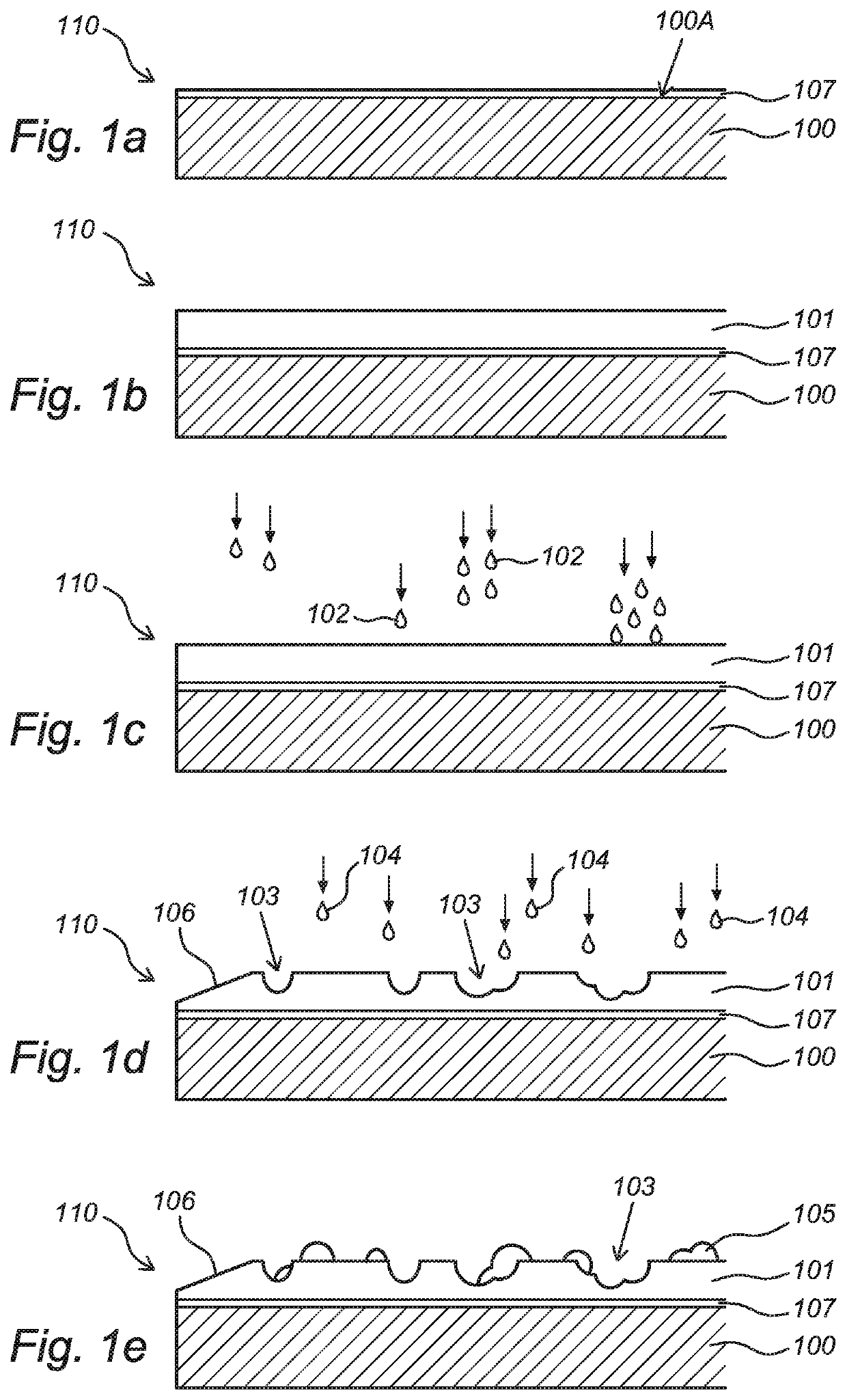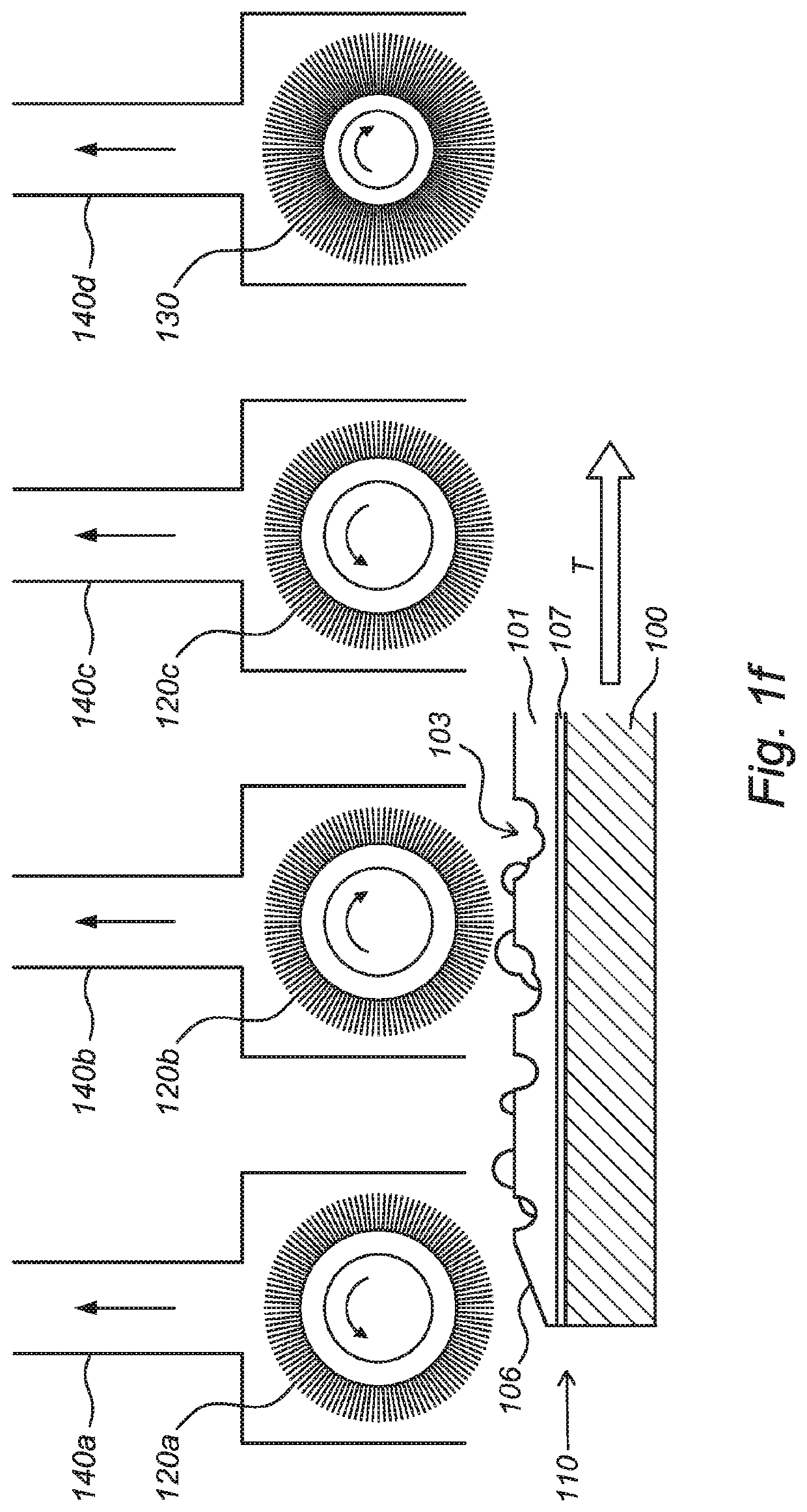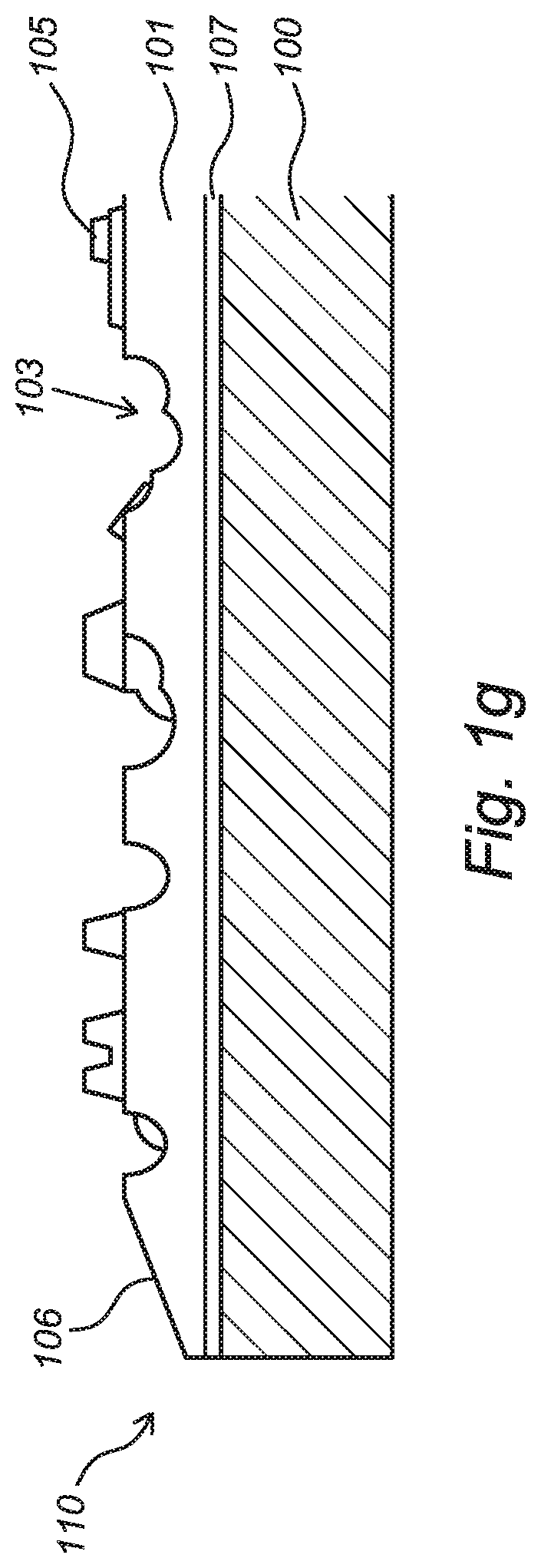Decorative surface covering element, surface covering element covering, and method of producing such a decorative surface covering element
a technology of decorative surface covering and element, which is applied in the direction of flooring, covering/lining, construction, etc., can solve the problems of increasing labor and overall cost of the project, wasting time, and wasting tim
- Summary
- Abstract
- Description
- Claims
- Application Information
AI Technical Summary
Benefits of technology
Problems solved by technology
Method used
Image
Examples
Embodiment Construction
[0063]FIGS. 1a-1g show subsequent steps of a method according to the present invention. FIG. 1a shows a schematic representation of a cross section of a decorative panel (110) as an example of a surface covering element according to the invention. The figure shows the core (100) of the panel (110). The core (100) is typically substantially rigid, and may possibly comprises at least one polymer and / or at least one wood-based material. A decorative layer (107), in particular a décor image, is formed, preferably by means of digital printing, onto the upper side (100A) of the core (100) by means of printing, in particular digital printing. FIG. 1b show that a liquid base layer (101) is applied on the déor image formed at the upper side (100A) of the panel (110). The liquid forming the liquid base layer (101) is for example a UV sealer. The liquid base layer (101) generally has a relatively high surface tension in order to allow precise embossing in the liquid base layer (101). FIG. 1c s...
PUM
| Property | Measurement | Unit |
|---|---|---|
| height | aaaaa | aaaaa |
| height | aaaaa | aaaaa |
| angle | aaaaa | aaaaa |
Abstract
Description
Claims
Application Information
 Login to View More
Login to View More - R&D
- Intellectual Property
- Life Sciences
- Materials
- Tech Scout
- Unparalleled Data Quality
- Higher Quality Content
- 60% Fewer Hallucinations
Browse by: Latest US Patents, China's latest patents, Technical Efficacy Thesaurus, Application Domain, Technology Topic, Popular Technical Reports.
© 2025 PatSnap. All rights reserved.Legal|Privacy policy|Modern Slavery Act Transparency Statement|Sitemap|About US| Contact US: help@patsnap.com



